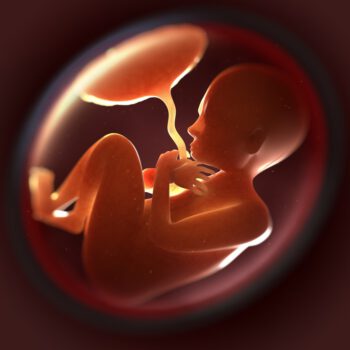
January 3rd, 2024
By Lily Anderson
Staff Writer for Wake Up World
In a recent study conducted by researchers at the John A. Burns School of Medicine (JABSOM) at the University of Hawai’i at M’noa and Kapi’olani Medical Center for Women & Children, a startling revelation has come to light: microplastic particles have made their way into the placenta, the sacred bridge between mother and fetus.
Men Jean Lee, an obstetrician and researcher at JABSOM and Kapi’olani Medical Center, expressed her surprise, stating, “We were shocked that these little pieces of plastic were getting across the mom’s gut and landing in the placenta.” Lee, along with Rodrigo Weingrill and Johann Urschitz from UH M’noa’s Institute for Biogenesis Research, co-authored the research published in Environment International.
The researchers meticulously examined placentas donated by women who gave birth in Hawai’i between 2006 and 2021. The results are alarming: the presence of microplastics in placentas increased over the years, with all 10 placentas studied in 2021 containing these minuscule plastic particles.
[pro_ad_display_adzone id=”110028″]
A Disturbing Trend: Microplastics on the Rise
In 2006, 60% of the placentas studied had microplastics. By 2013, this number rose to 90%, and in 2021, every placenta examined was tainted by these synthetic intruders. Lee speculates on the potential sources of these microplastics, stating, “We believe that the plastics may be floating around in food or being inhaled.”
“The big question is, as it’s traveling through the placenta, can it get through the umbilical cord and then to the baby? We don’t know that right now,” Lee adds, highlighting the urgency of further investigation.
Linking Plastics to the Paradise: Hawai’i’s Plastic Predicament
The surge in microplastics in Hawai?i’s placentas mirrors the global spike in plastic production. According to the Journal of Hazardous Materials, over 6,000 megatons of plastic were produced in 2020, compared to less than 2,000 megatons in 2000.
Lee connects Hawai’i’s unique challenges to this plastic predicament. “We’re the world’s most remote population center, 2,300 miles from California and 4,000 miles from Japan,” she explains. The dependence on plastic for daily conveniences, combined with Hawai’i’s tropical climate and limited recycling facilities, exacerbates the breakdown of plastics in the environment.
“The incineration of garbage, landfills, and marine pollution affect our communities,” Lee warns. She points out that even the recent Lahaina fires could potentially release microplastics and other toxins into the air.
Unanswered Questions: Can Microplastics Impact Fetal Health?
As the research unfolds, the team at JABSOM aims to determine if microplastics can breach the placental barrier and reach the fetus. Lee emphasizes that the goal is not to instill fear but to address critical questions: “What are the sources of maternal microplastics? What are the plastics doing in the mother’s body and the placenta? If they are getting to the other side, are they affecting fetal growth, and what happens to the baby when he/she grows up?”
The journey into understanding the impact of microplastics on the delicate dance of pregnancy has just begun. Stay tuned as the researchers at JABSOM delve deeper into the mysteries surrounding microplastics and their potential effects on the next generation.
Journal Reference:
- Temporal trends in microplastic accumulation in placentas from pregnancies in Hawai?i. Environment International, 2023; 180: 108220 DOI: 10.1016/j.envint.2023.108220
About the author:
Lily Anderson is a passionate wordsmith and dedicated explorer of cutting-edge scientific inquiries. Fuelled by a thirst for knowledge, she skilfully transforms intricate ideas into relatable tales, inviting readers to embark on a captivating expedition of revelation. Lily’s efforts play a crucial role in bridging the gap between experts and the wider public, evoking a sense of awe and encouraging insightful discussions about groundbreaking scientific advancements.






